Country Army. How Eritrea fought for independence and why it is considered the most closed country in Africa
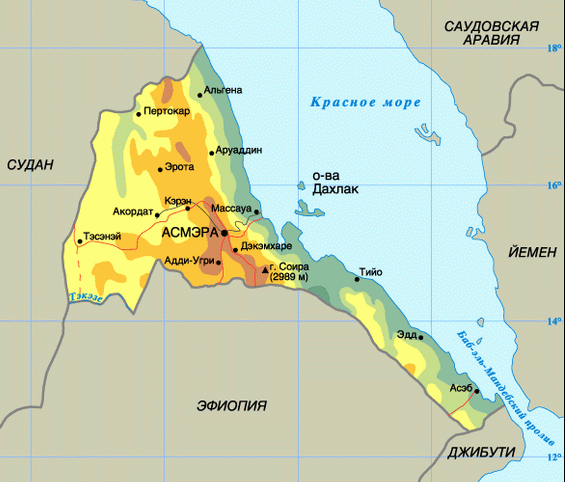
Located in East Africa, on the coast of the Red Sea, Eritrea achieved political independence quite recently - in 1994, as a result of a long and bloody war. Prior to this, the territory of Eritrea was part of Ethiopia, with which the Eritreans could not reconcile and fought for independence, and before World War II was an Italian colony. By the way, the cultural influence of Italy is still felt in Eritrea, although the Italians left here seventy-five years ago - in the 1941 year, when they were defeated by the British in Ethiopia.
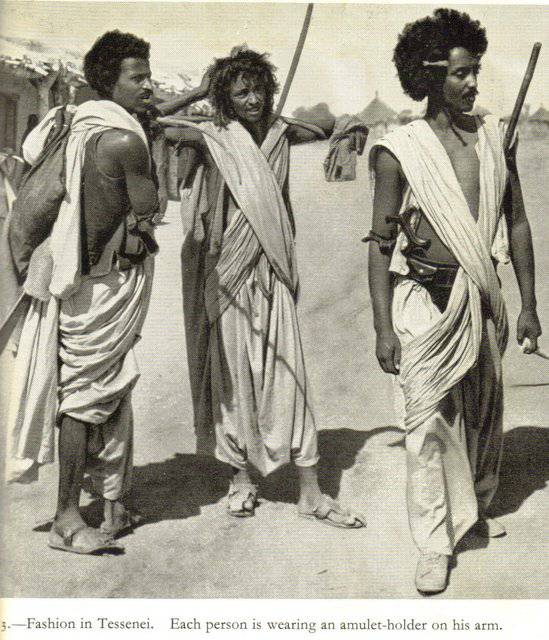
History This ancient country has more than one millennium. Once it was part of the famous Axum kingdom, then Ethiopia, and in the XVI century the city of Massawa, one of the most important Red Sea ports, was subordinated to the Ottoman Empire. Until the second half of the 19th century, Massawa was considered an Ottoman port, although the Turkish authorities didn’t control the situation in the depths of Eritrea and didn’t really strive for it. They are quite satisfied with the control of the port with its high turnover. The weakening of the Ottoman Empire in the XIX century, eventually, led to the fact that Massawa was transferred to Egypt. In the meantime, Italians have shown more and more interest in the Red Sea coast of East Africa. The Italian company Rubattino bought the port of Assab from local authorities, and in 1882, the city of Assab became the property of the Italian government. In 1885, the Italians captured Massawa.
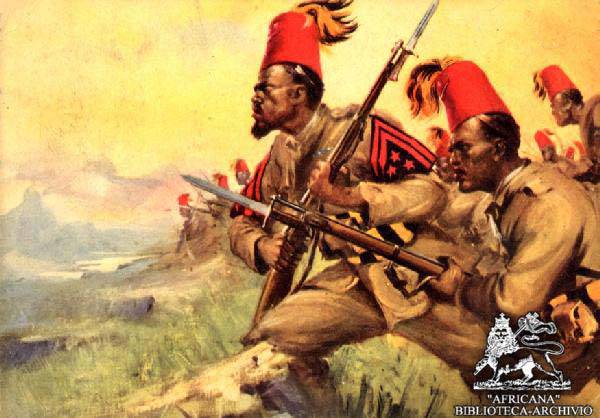
Despite the protests of Egypt, the Ottoman Empire and Ethiopia, 1 January 1890 was officially announced the creation of the colony of Italian Eritrea. Thus began the half-century period of the Italian colonization of the country. It should be noted that the Italians really contributed to the economic development of Eritrea. Railways and highways, enterprises, modern hospitals appeared in the country. Massawa and Asmara are still full of buildings built by the Italians. Many Eritreans served in the Italian colonial forces — even a special corps of “Eritrean Ascari” was formed from them. For the warlike tribes of Eritrea, service in the colonial forces quickly became the most prestigious occupation. According to some reports, at least 40% of the male population of Italian Eritrea had military service experience in colonial units. Eritrean Ascari took part in all the colonial wars of Italy - in the colonization of Somalia, in the Italian-Turkish war of 1911-1912, when Italy seized Libya, in the occupation of Ethiopia in 1934-1941.
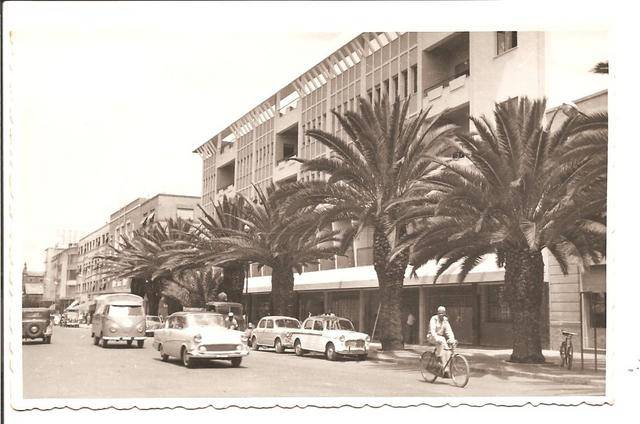
In 1941, the Italians suffered a defeat in Ethiopia from the British forces, and then the British invaded Italian East Africa - Eritrea and Italian Somalia. Rumors have spread among the local population that, after the end of the war, Eritrea would be included in Ethiopia. The Eritrean Muslims, who make up half the country's population, did not want this. They were well aware that in Ethiopia Muslims are completely isolated from participation in government and are discriminated against. Meanwhile, in Eritrea, Muslim merchants enjoyed a great deal of influence, as they controlled the ports of Assab and Massawa and all of the Red Sea trade with the Arab East.
After the end of World War II, the question of the fate of Eritrea was referred to the Council of Ministers of Foreign Affairs of the victor countries (USSR, USA, Great Britain, France). Until 1952, the country was under the administration of the British administration. 2 December 1950 The UN General Assembly decided to unite Eritrea with Ethiopia, and Eritrea received the status of an autonomous region with its own executive, legislative and judicial power. Since 15 September 1952, Eritrea became part of Ethiopia as a self-governing territory. However, the Ethiopian authorities did not intend to take into account the autonomy of Eritrea and very quickly eliminated all self-governance in the region. Amharic, the state language in Ethiopia, was also planted in Eritrea, where the majority of the population speak Tigrinya. Education was made possible only in Amharic. At the same time, the powerful trade union movement formed during World War II was suppressed. These steps of the Ethiopian emperor led to growing discontent not only among the Muslim, but also among the Christian population of Eritrea. There were radical organizations focused on the national liberation struggle.
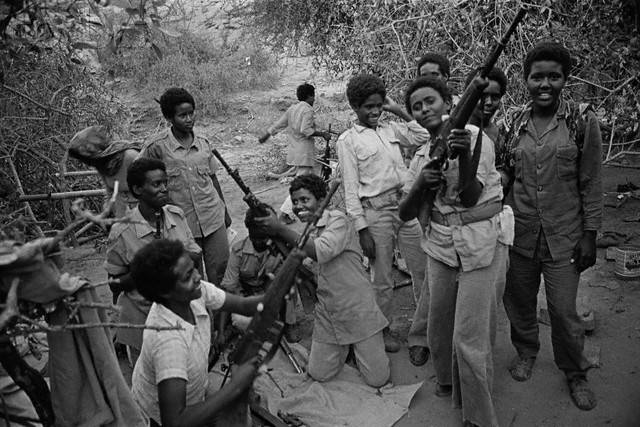
In 1958, the Eritrean Liberation Movement (EDI) was created in emigration in Port Sudan (Sudan), the sources of which were Mohammed Said Navad, formerly in the Communist Party of Sudan, former leader of the Rabita el-Islamia party Haji Ibrahim Sultan and journalist Voldeab Voldemaryam. EDI launched a slogan about the need to unite Muslims and Christians to fight for the independence of Eritrea. By the way, Eritrea is a unique example of how national identity turns out to be higher than religious identity. The Eritrean Christians, together with the Eritrean Muslims, fought for independence from Christian Ethiopia, and then began to build a single state. In July, 1960 was formed in Cairo (Egypt) by the Eritrea Liberation Front (FED), which was led by the former chairman of the regional parliament, Idris Mohammed Adem. Both organizations not only fought against Ethiopia, but also opposed each other, which made it easier for the Ethiopian special services to suppress the opposition.
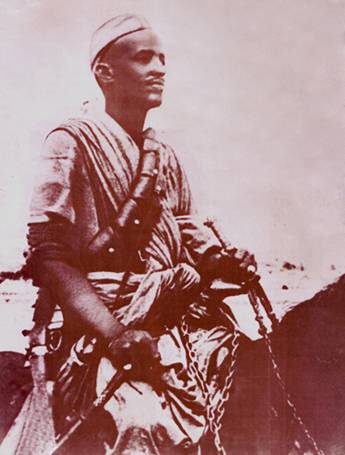 14 November 1962, the Eritrean National Assembly controlled by the Ethiopian authorities voted to abolish the Federation of Eritrea and Ethiopia, after which Eritrea was incorporated into Ethiopia as an ordinary province. The emperor of Ethiopia Haile Selassie could triumph - he, despite the decision of the UN General Assembly, completely annexed Eritrea. However, this event led to the beginning of the armed struggle, which lasted more than thirty years and led to the proclamation of the national independence of Eritrea. Officially, the Day of the Beginning of the Armed Liberation Struggle of the People of Eritrea is 1 September 1961. On this day, an Eritrean Liberation Front militia group commanded by renowned field commander Hamid Idris Awate (1910-1962) joined the battle with the Ethiopian police near the town of Amba-Adal. He is considered a national hero in Eritrea. Although Hamid Idris Awate (pictured) died by his death in May 1962, he is considered the founder of the Eritrean Liberation Army (UAE) - the armed wing of the Eritrea Liberation Front. The backbone of the front was the former "Shift" (robbers), deserters from the police and the army - people from Eritrea. By 1965, the number of United Arab Emirates reached 1000 militants. Arms were supplied by Syria and Iraq - Arab nationalist regimes sympathized with the struggle for the independence of Eritrea. The UAE commander was lawyer Idris Osman Kalaidos, his assistant - a former teacher Osman Saleh Subbi. The army headquarters is located in Sudan - in the city of Kassala, and the highest leadership of the PEI was still in Cairo.
14 November 1962, the Eritrean National Assembly controlled by the Ethiopian authorities voted to abolish the Federation of Eritrea and Ethiopia, after which Eritrea was incorporated into Ethiopia as an ordinary province. The emperor of Ethiopia Haile Selassie could triumph - he, despite the decision of the UN General Assembly, completely annexed Eritrea. However, this event led to the beginning of the armed struggle, which lasted more than thirty years and led to the proclamation of the national independence of Eritrea. Officially, the Day of the Beginning of the Armed Liberation Struggle of the People of Eritrea is 1 September 1961. On this day, an Eritrean Liberation Front militia group commanded by renowned field commander Hamid Idris Awate (1910-1962) joined the battle with the Ethiopian police near the town of Amba-Adal. He is considered a national hero in Eritrea. Although Hamid Idris Awate (pictured) died by his death in May 1962, he is considered the founder of the Eritrean Liberation Army (UAE) - the armed wing of the Eritrea Liberation Front. The backbone of the front was the former "Shift" (robbers), deserters from the police and the army - people from Eritrea. By 1965, the number of United Arab Emirates reached 1000 militants. Arms were supplied by Syria and Iraq - Arab nationalist regimes sympathized with the struggle for the independence of Eritrea. The UAE commander was lawyer Idris Osman Kalaidos, his assistant - a former teacher Osman Saleh Subbi. The army headquarters is located in Sudan - in the city of Kassala, and the highest leadership of the PEI was still in Cairo. The weak point of the Eritrea Liberation Army was extremely high ethnic fragmentation. Units were formed on the tribal basis and were actually subordinate only to their field commanders, which significantly complicated the centralized command. In addition, the Eritrean Liberation Front eroded confessional contradictions - power in it was in the hands of Muslims who did not trust the Christians and suspected them of "working in Ethiopia." In the end, a series of splits occurred in the FEA. The Eritrean Liberation Front stood out - the People’s Liberation Forces (FEF-FIR) and the Eritrea Liberation Front-the Revolutionary Forces (FEF-RS).
FOE-NOS, under the leadership of Osman Saleh Sabbi, received strong support from Libya, whose leader Muammar Gaddafi helped many revolutionary movements in Africa and Asia. Gradually, the Eritrean rebels began to pose a serious threat to Ethiopia. The imperial army was not able to suppress their resistance, and the number of insurgent militants grew every year. Starting with a detachment of several hundred people, the fighters for the independence of Eritrea by the middle of the 1970s. had an army in 20 thousand people. FEA-NOS received support from Libya, FEA - from Iraq, Syria, China, Cuba.
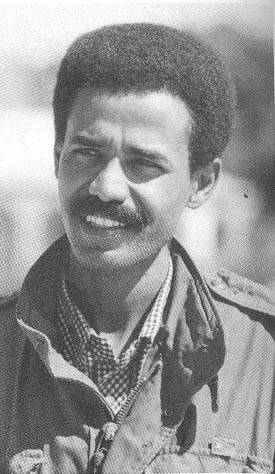
In the ranks of the FEA before the 1970-ies. the current president of Eritrea, Isaias Afevorki (born 1946) also fought. In 1966, Afevorki (pictured), a nationally-born tigger, dropped out of the University of Addis Ababa and joined the Eritrean Liberation Front. He passed military and political training in China, becoming a supporter of Marxist-Leninist ideas of a radical sense, was a political commissar and deputy division commander in the Eritrean Liberation Army. In 1973, the city of Isaias Afevorki, who led the group of Christian commanders of the FEA, and the Muslim Ramadan Mohammed Nur, created a new organization, the People’s Front for the Liberation of Eritrea (NFER). Quickly enough, NFPE, which proclaimed Marxism-Leninism as its ideology, became the most important military-political organization of the Eritrean rebels.
September 12 1974 was a military coup in Ethiopia. Emperor Haile Selassie was overthrown, power passed to the revolutionary-minded military. The Provisional Military Administrative Council (WAAS) headed by General Teferi Banti, who tried to resolve the situation in Eritrea, became the highest authority. However, in 1977, General Teferi Banti was killed, and power in Ethiopia passed into the hands of his deputy lieutenant colonel Mengistu Haile Mariam. By this time, in Eritrea, 90% of the territory was under the control of NFOE and FER insurgents. The independence fighters controlled all the cities of Eritrea except the capital Asmara and the ports of Assab and Massawa. NFPE advocated the unity of Christians and Muslims in the struggle for independence, the construction of a people's democratic state.
Ethiopia’s victory over Somalia in the Ogaden War in 1977-1978 persuaded Ethiopian leader Mengistu Haile Mariam in the power of his subordinate army. Ethiopian troops again launched combat operations against the Eritrean rebels. The bloody war continued throughout the 1980s. Together with the Popular Front for the Liberation of Eritrea, Ethiopia fought the Tigray Popular Front for the Liberation (NFOT), a radical leftist organization that stood for the independence of Tigray province inhabited by the Ethiopian people Tigray. By the way, despite the fact that the main patron of Ethiopia in the 1980-s. was the Soviet Union, the Popular Front for the Liberation of Eritrea treated the USSR very well, and viewed the fact that the Soviet leadership supported the regime of Mengistu Haile Mariam in Ethiopia as a result of misunderstanding of African specifics in a distant Soviet country. In the end, it was the refusal of the Soviet Union to help Mengistu Haile Mariam in 1990 that led to the collapse of his government. 21 May 1991 Mr. Mengistu Haile Mariam left Ethiopia and emigrated to Zimbabwe.
24 May 1993, after the referendum, Eritrea became independent. 28 May 1993. The country was admitted to the United Nations. The President of Eritrea was the leader of the NFE, Isayas Afevorki. But many border and economic disputes remained unresolved, leading to a new Eritrean-Ethiopian war in 1998-2000, which resulted in the Ethiopian army pushing Eritrean troops out of the disputed territories that they occupied in 1998. The wars for a long time determined the social and Eritrea’s political face - it is now a highly militarized and closed country.
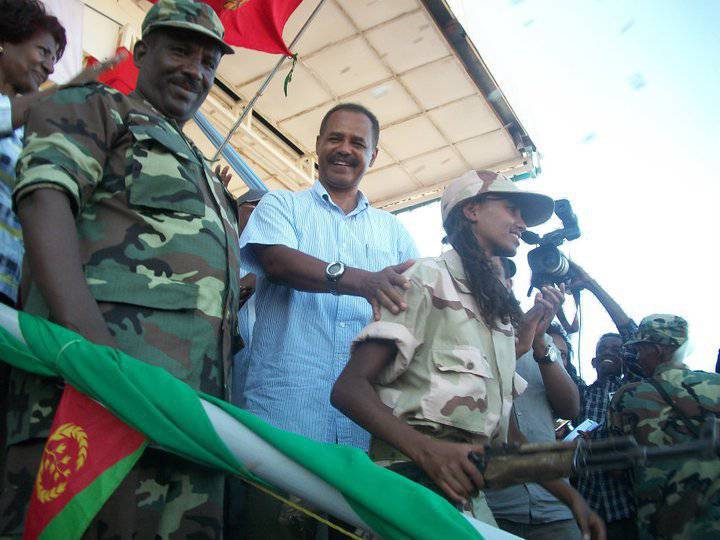
A huge part of the male population serves in the army by conscription - by 10-15 years. Call and women. In peacetime, soldiers are used as labor to build roads, canals, buildings, and often they are forced to work not even for the state, but for commanders. Desertion and draft evasion have become a national epidemic in the country. It is the call for military service lasting 10-15 and more years and the death penalty for desertion that is the main reason for the mass exodus of young Eritrean men to European countries and Israel (Eritrea does not issue exit visas to men younger than 54 years and women younger than 47 years) . The West accuses the regime of Afevorki of authoritarianism, discrimination against religious minorities, support of Somali terrorists. But, at the same time, most Eritrean researchers agree that the 70-year-old Isaias Afeworki is perhaps the only leader in the country who can maintain its unity and keep it from total chaos. What will happen to Eritrea after he leaves the political scene (and he is already 70 years old) is hard to imagine.
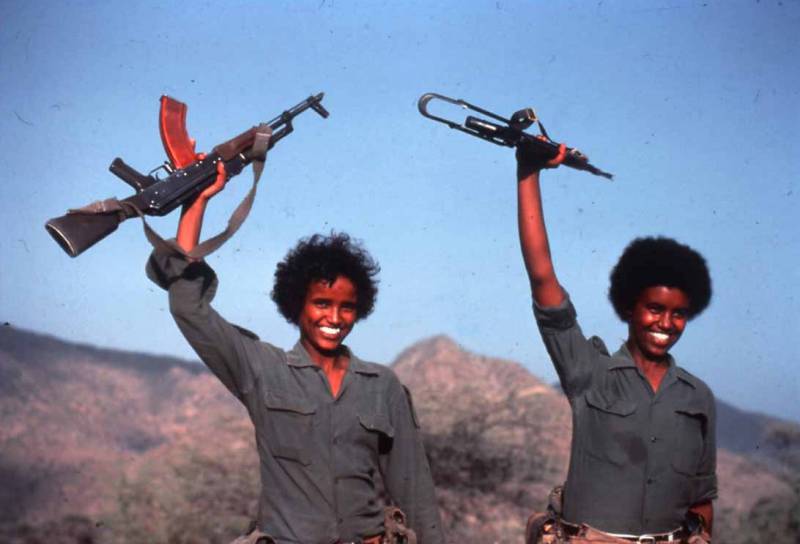
Information